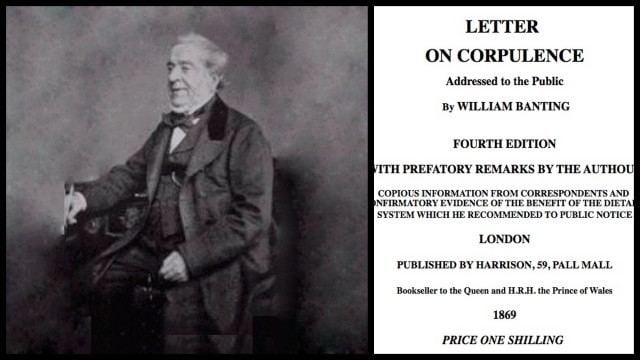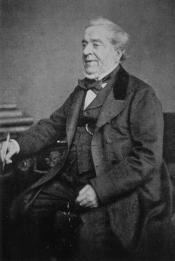Nationality British Children Amelia (daughter) Genre Nonfiction Name William Banting | Role Undertaker Spouse Mary Ann (wife) | |
 | ||
Books Letter on Corpulence: Addressed to the Public Parents Thomas Banting, Ann Banting | ||
Banting's Testimony The Good Way 2016
William Banting (c. December 1796 – 16 March 1878) was a notable English undertaker. Formerly obese, he is also known for being the first to popularise a weight loss diet based on limiting the intake of carbohydrates, especially those of a starchy or sugary nature. He undertook his dietary changes at the suggestion of Soho Square physician Dr. William Harvey, who in turn had learnt of this type of diet, but in the context of diabetes management, from attending lectures in Paris by Claude Bernard.
Contents
- Bantings Testimony The Good Way 2016
- Professional career
- Letter on Corpulence Addressed to the Public
- The word banting
- Legacy
- Personal life
- References

Professional career

In the early 19th century, the family business of William Banting of St. James’s Street, London, was among the most eminent companies of funeral directors in Britain. As funeral directors to the Royal Household itself, the Banting family conducted the funerals of King George III in 1820, King George IV in 1830, the Duke of Gloucester in 1834, the Duke of Wellington in 1852, Prince Albert in 1861, Prince Leopold in 1884, Queen Victoria in 1901, and King Edward VII in 1910. The royal undertaking warrant for the Banting family eventually ended in 1928 with the retirement of William Westport Banting.
Letter on Corpulence, Addressed to the Public

In 1863, Banting wrote a booklet called Letter on Corpulence, Addressed to the Public which contained the particular plan for the diet he followed. It was written as an open letter in the form of a personal testimonial. Banting accounted all of his unsuccessful fasts, diets, spa and exercise regimens in his past, then described the dietary change which finally had worked for him, following the advice of a physician. His own diet was four meals per day, consisting of meat, greens, fruits, and dry wine. The emphasis was on avoiding sugar, saccharine matter, starch, beer, milk and butter. Banting’s pamphlet was popular for years to come, and would be used as a model for modern diets. Initially, he published the booklet at his personal expense. The self-published edition was so popular that he determined to sell it to the general public. The third and later editions were published by Harrison, London. Banting's booklet remains in print as of 2007, and is still available on-line.
The word "banting"
The popularity of the pamphlet mentioned above was such that the questions "Do you bant?" or "Are you banting?", still occasionally in use today, refer to his method, and sometimes even to dieting in general. In Sweden "banta" is still the main verb for "being on a diet".
Legacy
Gary Taubes' recent study of carbohydrates, Good Calories, Bad Calories, begins with a prologue entitled "A brief history of Banting" and discusses Banting at some length. Discussions of low-carbohydrate diets often begin with a discussion of Banting.
Personal life
Banting was a distant relative of Sir Frederick Banting, the co-discoverer of insulin. Banting's body is buried with those of his wife and daughter at Brompton Cemetery, London, England.
